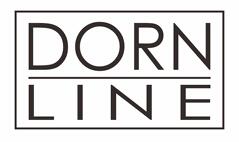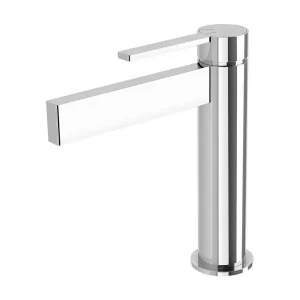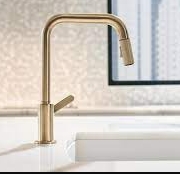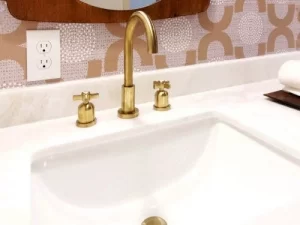Pre-rinse units can also be used as restaurant spray showers for ware washing. In addition, they can be used in other environments, such as supermarkets and pet salons, because they provide cleanliness and convenience.
Pre-rinse systems are typically installed at a point of use (e.g., a sink or countertop) to provide water that is free from contaminants and bacteria prior to the application of soap and/or detergent. Also Read Faucet for Kitchen.
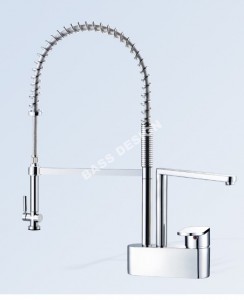
The pre-rinse system may include one or more valves, pipes, filters, pumps, and/or heaters. A typical pre-rinse unit includes a reservoir containing water that is pumped into a sprayer head by a pump. The sprayer head sprays pressurized water onto the surfaces being cleaned. This type of pre-rinse system provides several advantages over traditional handheld showerheads. For example, the pre-rinse system allows the user to select the amount of water pressure applied to the surface being washed. Also, the pre-rinses system is not limited to spraying only on horizontal surfaces. Instead, it can be directed toward vertical surfaces such as walls and ceilings. Further, the pre-rinse system does not require manual cleaning after each use.
Disadvantages of pre-rinse systems include the need for plumbing work and installation costs. It is important to note that the cost of installing a pre-rinse system depends on where the system will be located. If the pre-rinse unit is going to be placed in an area with existing piping, then there is little additional expense involved. However, if the pre-rinse is going to be installed in a new location, then extensive plumbing work must take place. Also read Pre Rinse Kitchen Faucet – High Quality.
In addition, pre-rinse systems are often very large and bulky. They are usually designed to be mounted directly above a sink or countertop so that they do not interfere with normal kitchen activities. As a result, these devices tend to be relatively tall and wide. Consequently, many homeowners find them difficult to install and maintain.
Faucet Style: Restaurant-Style Pre Rinse Commercial Faucet
Restaurant-style pre-rinse faucets have been developed to address some of the problems associated with conventional pre-rinse systems. These faucets allow the user to control the flow rate of water through the faucet.
Typically, these faucets include a valve assembly having two positions—a first position providing full flow and a second position stopping the flow. When the valve is turned to the first position, water flows continuously from the faucet spout. To stop the flow, the valve is moved to the second position.
While this design works well for its intended purpose, it has several disadvantages.
- First, when the valve is in the first position, the water flow is continuous. Thus, the user cannot adjust the flow rate without turning off the water supply.
- Second, the user must manually turn the valve between the first and second positions.
- Third, the faucet requires a separate handle to operate the valve.
- Fourth, the faucet is not suitable for mounting on a wall because it is too tall.
- Fifth, the faucet cannot be used as a handheld device due to the size of the valve assembly.
- Sixth, the faucet does not provide any indication of whether the pre-rinse function is activated.
- Seventh, the faucet uses a complex mechanical linkage to move the valve stem.
- Eighth, the faucet utilizes a spring-loaded ball check valve to prevent backflow.
- Ninth, the faucet has a high profile which makes it unsuitable for mounting on a wall.
- Tenth, the faucet’s design results in excessive noise during operation.
Commercial Faucet Pre Rinse products for sale
Many different types of pre-rinse units are available for purchase at retail stores. Typically, these units come in three forms. One form consists of a stand-alone unit that attaches to the end of a standard kitchen faucet. Another form consists of a built-in unit that is attached to the side of a sink or other fixture. The third form consists of a handheld wand that can be connected to either a sink or a faucet. Also read Pre-Rinse Faucet – Cost to Install Pre-Rinse Faucet.
Stand-Alone Units
The stand-alone units are typically very small and compact. They are designed to plug into standard kitchen faucets’ hot and cold water lines. In order to activate the pre-rinse feature, the consumer needs only to press a button or lever on the unit. This allows the consumer to perform the pre-rinse task while washing dishes or doing other tasks around the kitchen.
One problem with stand-alone units is that they require the consumer to use both hands to activate the pre-rinsing feature. While one hand is holding the dishware, the other hand is required to manipulate the unit. It would be desirable if such units could be made more convenient for the consumer.
Built-in Units
A typical built-in unit includes an elongated housing that is mounted within a hole cut out of the sink or other fixture. An internal plumbing system connects the unit to the sink’s existing plumbing. The unit is then filled with water. The consumer turns on the faucet and begins rinsing.
A disadvantage of built-in units is that they are difficult to install. They require special tools and skill to properly mount them in the sink. Further, once installed, they are permanent fixtures that may interfere with the normal operation of the sink.
Handheld Wands
Handheld wands are typically long tubes that have a nozzle at one end. When the consumer presses down on the tube, water flows through the tube and out the nozzle. Handheld wands are usually sold separately from the faucet. They are often used for cleaning hard-to-reach areas of sinks and tubs.
Handheld wands suffer from many of the same problems as stand-alone units. They require two hands to operate. They also require the consumer to bend over to clean under the sink. A further drawback is that they tend to get clogged easily.
While each of the above-described devices fulfills its own particular objectives and requirements, none of them provides all of the advantages provided by the present invention. Accordingly, there remains a need for a new and improved handheld pre-rinse device that meets all of the above-mentioned objectives and requirements. shop now.
FAQs
What is the pre-rinse faucet?
Pre-rinse faucets are a type of faucet that has been specifically designed to provide a quick way to wash your hands before you eat. These faucets allow you to rinse off any soap residue left behind after using the bathroom.
What is a spray valve?
Spray valves are a type of valve that controls how much water comes out of the spout. Spray valves are commonly found on faucets and showerheads.
How does a pre-rinse faucet work?
The pre-rinse faucet works by having a separate valve inside the handle of the faucet. When the user wants to turn on the pre-rinse function, he/she simply pushes the button located on the side of the handle. Once activated, the pre-rinse will run continuously until it is turned off.
Pre-rinse faucets can be purchased as single-handle models or double-handle models. Single-handle models include a control knob that activates the pre-rinse. Double-handle models include two knobs: one knob activates the pre-rince while the second knob activates the mainstream flow.
Are pre-rinse fountains safe?
Yes, pre-rinse fauntes are very safe. In fact, they’re so safe that most municipalities don’t even require them to meet certain safety standards. However, because pre-rinse faucets are not connected to the
